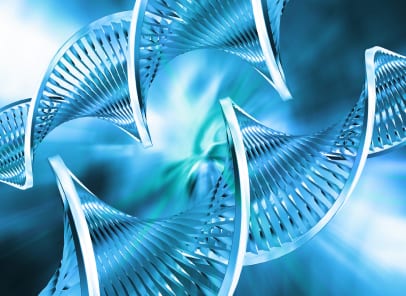
British researchers have identified four new genetic variants that may influence a male’s risk for testicular cancer. These results, published recently in the journal Nature Genetics, along with variations in three genetic regions previously identified by the same group, are beginning to shed some light on the biological mechanisms underpinning testicular cancer.
Testicular cancer is the most common type of cancer in men age 15 to 35, and it is on the rise. About 8,000 men in the United States are diagnosed each year. This is about double what was seen in the 1970s. The speed of this increase suggests that environmental factors are at work, but researchers know that genes have a substantial influence on the disease too — testicular cancer is one of the most heritable types of cancer. The risk of testicular cancer is increased 8-10 fold for brothers and 4-6 fold for fathers of patients.
Clare Turnbull and colleagues analyzed the DNA of 979 men with testicular cancer and 4,947 controls, all of European descent. Many of these men were included in the group’s previous study. The four SNPs most strongly associated with testicular cancer were then followed up in an additional sample of 664 cases and 3,456 controls, where evidence of association was also found.
Two of the newly identified SNPs, lie in region of the genome previously associated with multiple cancers, including lung cancer, glioma, bladder cancer, cervical cancer, prostate cancer, basal cell carcinoma and melanoma. The third SNP identified by the researchers, , is located near a gene that encodes a factor that turns on the telomerase enzyme. Telomerase helps maintain the length of the protective caps on the ends of chromosomes called telomeres.
Finally, the researchers found a link between in the DMRT1 gene with testicular cancer. This gene is known to be involved in testicular development. In mice, loss of this gene is associated with testicular cancer.
The researchers calculated that the four variants they identified in this study account for 4% of the risk to brothers and 6% of the risk to sons of men with testicular cancer. Taking into account the variants they previously identified, Turnbull et al. say that 11% and 16% of the risk is explained, respectively.
All of the SNPs now associated with testicular cancer are in genes that fall into three main biological pathways, all plausible candidates for involvement in testicular cancer. Further research into these variants and the genes in which they are found will hopefully uncover the mechanisms of cancer predisposition. Additionally, further research may also reveal more genetic variants associated with risk for testicular cancer.



